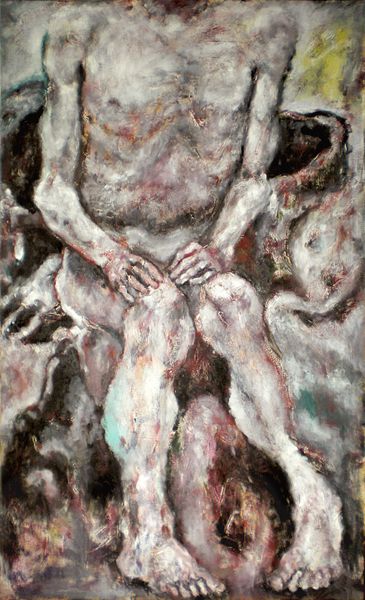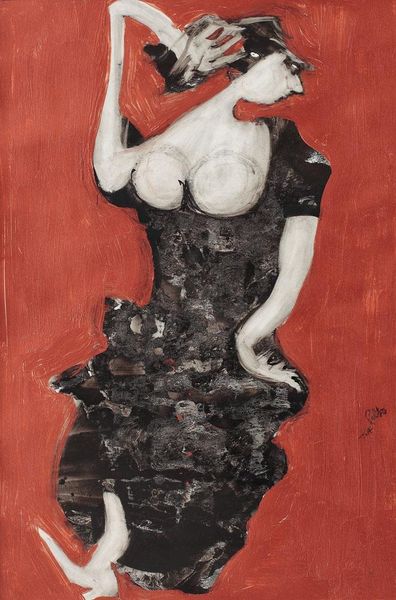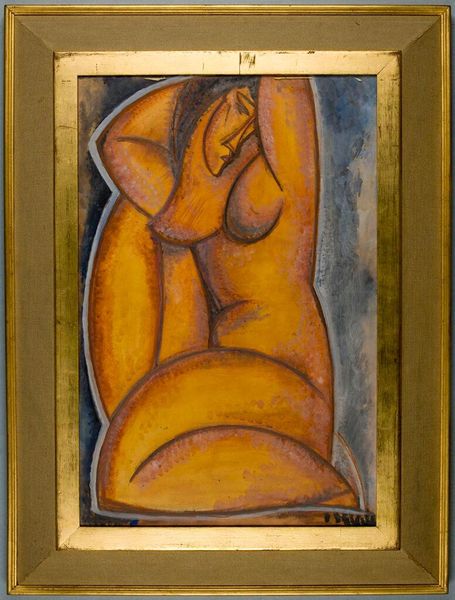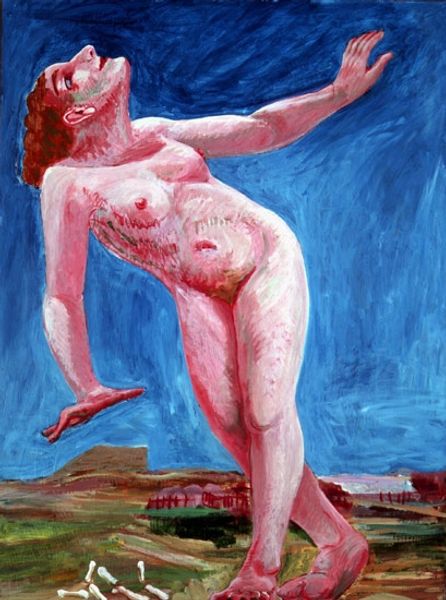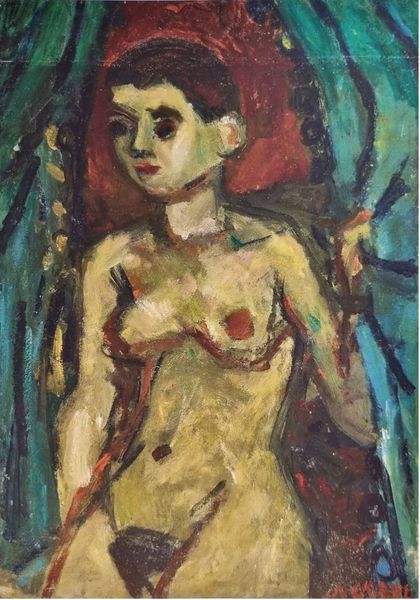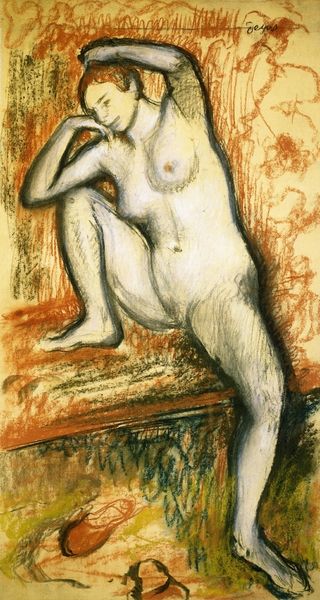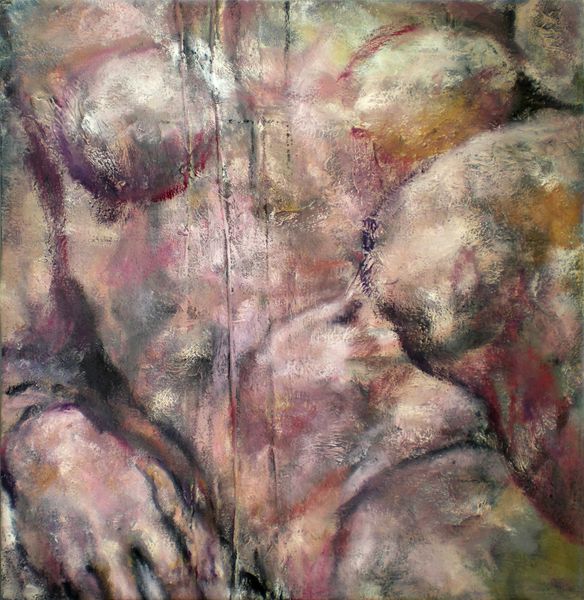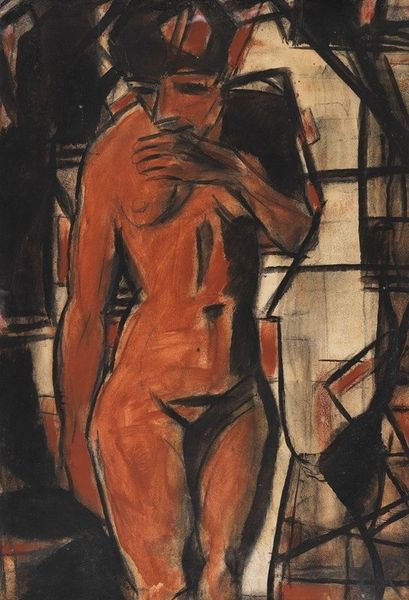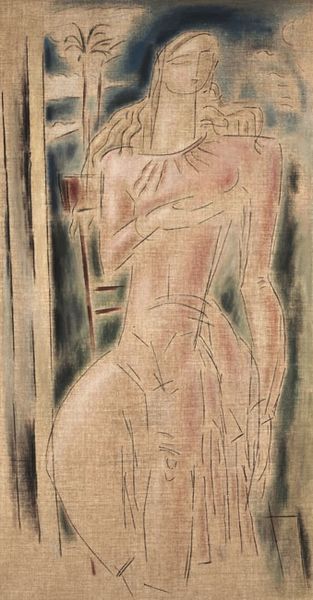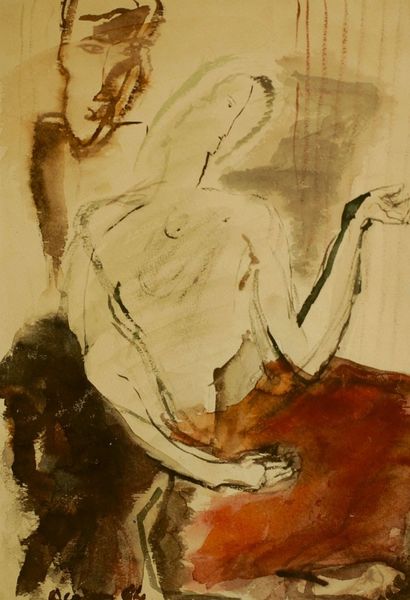
Dimensions: 60 x 45.5 cm
Copyright: Public domain
Curator: We’re now standing before Modigliani’s "Nude Caryatid," painted in 1913, rendered in oil. Editor: It's striking—a raw, almost primal energy in the brushstrokes and the figure’s pose. I'm immediately drawn to the physical act of painting, the way the pigment builds texture. Curator: Indeed. Modigliani, situated in a pivotal era for women, paints her in a way that almost disassembles the classical, male-gaze dominated 'nude' trope. There is an incredible amount of physicality to the figure that I think comes across in that pose. She almost seems to be defying the architectural function of the caryatid. Editor: Yes, the subversion is definitely at play here. The rough application of paint emphasizes the body's materiality—this isn't just about idealized beauty. There's a definite contrast with the smoothness typically associated with traditional nudes or the architectural purpose caryatids were made to serve. It is more labor, both for artist and model. Curator: And considering his artistic circle in Paris, immersed in discourses of Cubism and Primitivism, it's tempting to ask who exactly benefits from artistic representation of bodies in a specific social or art context. There are dialogues within Modigliani's painting practice and this makes a painting into an active political act. Editor: The question of who benefits is absolutely key. By foregrounding the physical, by almost flaunting the artist's hand and labor, it encourages us to consider the economics of art production too: the value we place on skill, the conditions of making. Curator: It's a provocation, really. A painting inviting us to dismantle, if not simply question, established notions of beauty, class, labor, and femininity. Editor: Agreed, this painting acts as a catalyst. Curator: So much to reflect upon here. Editor: Absolutely, from both philosophical and material perspectives.
Comments
No comments
Be the first to comment and join the conversation on the ultimate creative platform.
